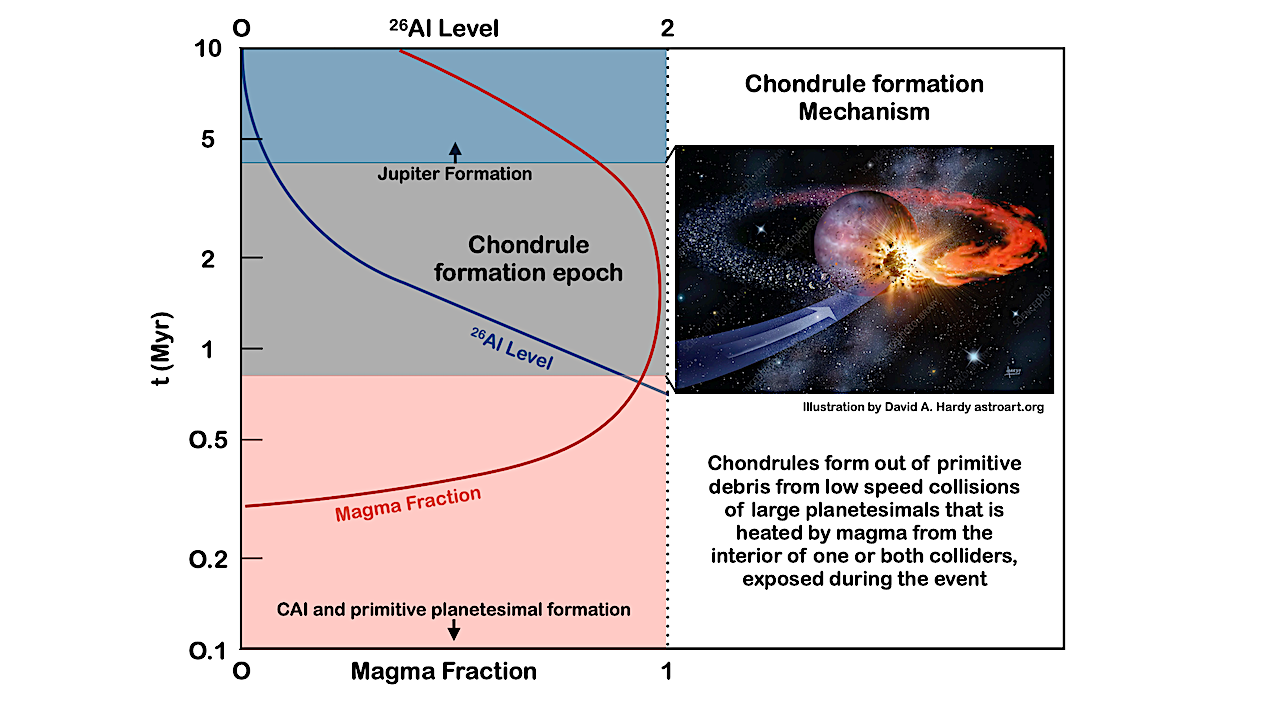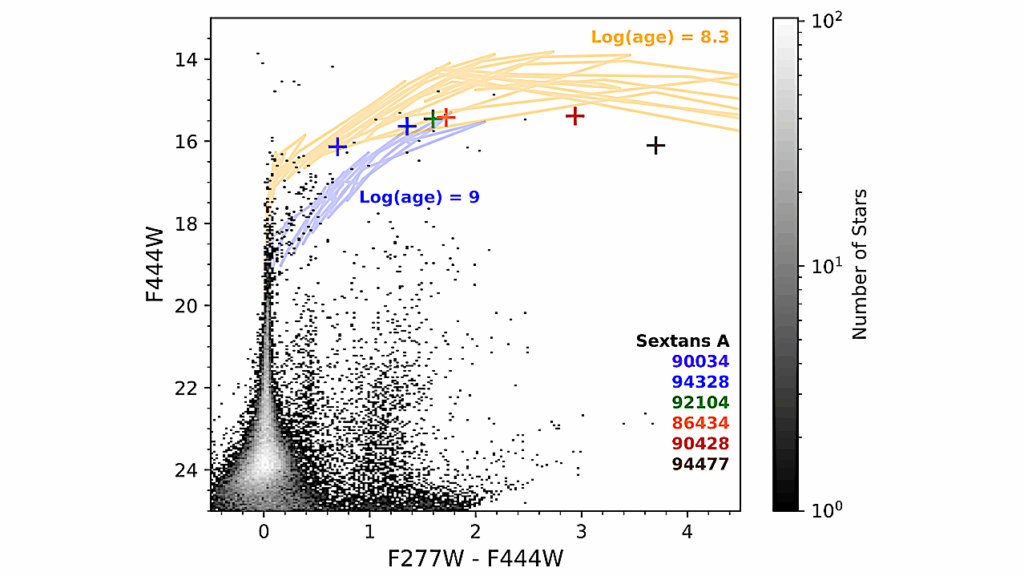Chondrule Formation During Low-Speed Collisions of Planetesimals: A Hybrid Splash-Flyby Framework

Chondrules probably formed during a small window of time ∼1-4 Ma after CAIs, when most solid matter in the asteroid belt was already in the form of km-sized planetesimals.
They are unlikely, therefore, to be “building blocks” of planets or abundant on asteroids, but more likely to be a product of energetic events common in the asteroid belt at that epoch.
Laboratory experiments indicate that they could have formed when solids of primitive composition were heated to temperatures of ∼1600 K and then cooled for minutes to hours. A plausible heat source for this is magma, which is likely to have been abundant in the asteroid belt at that time, and only that time, due to the trapping of 26Al decay energy in planetesimal interiors.
Here we propose that chondrules formed during low-speed (≲1 km s−1) collisions between large planetesimals when heat from their interiors was released into a stream of primitive debris from their surfaces. Heating would have been essentially instantaneous and cooling would have been on the dynamical time scale, 1/(√Gρ)∼30 minutes, where ρ is the mean density of a planetesimal.
Many of the heated fragments would have remained gravitationally bound to the merged object and could have suffered additional heating events as they orbited and ultimately accreted to its surface. This is a hybrid of the splash and flyby models: we propose that it was the energy released from a body’s molten interior, not its mass, that was responsible for chondrule formation by heating primitive debris that emerged from the collision.
William Herbst, James P. Greenwood
Comments: 17 pages, 3 figures. Accepted for publication in Meteoritics and Planetary Science
Subjects: Earth and Planetary Astrophysics (astro-ph.EP); Geophysics (physics.geo-ph)
Cite as: arXiv:2402.12534 [astro-ph.EP] (or arXiv:2402.12534v1 [astro-ph.EP] for this version)
Submission history
From: William Herbst
[v1] Mon, 19 Feb 2024 20:47:16 UTC (5,915 KB)
https://arxiv.org/abs/2402.12534
Astrobiology








